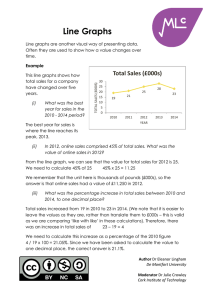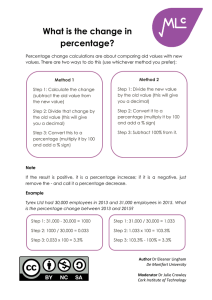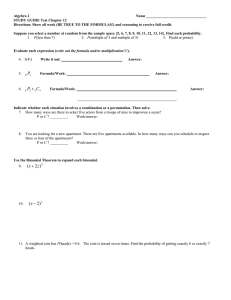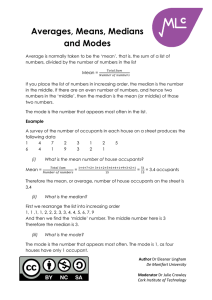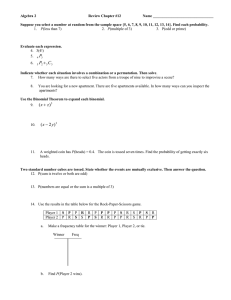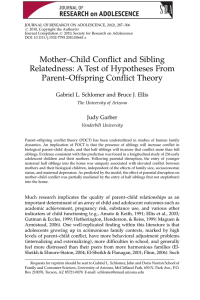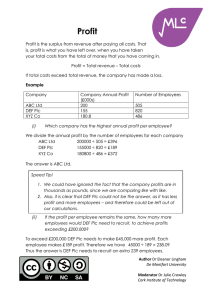Bar Charts
advertisement
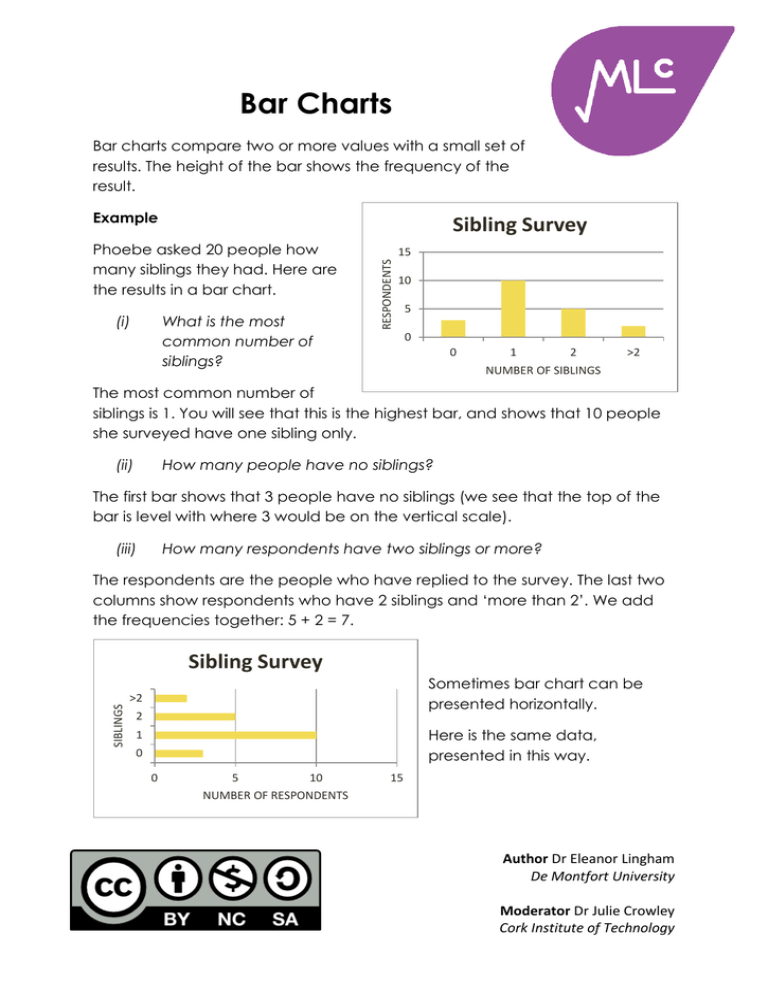
Bar Charts Bar charts compare two or more values with a small set of results. The height of the bar shows the frequency of the result. Example Sibling Survey (i) What is the most common number of siblings? 15 RESPONDENTS Phoebe asked 20 people how many siblings they had. Here are the results in a bar chart. 10 5 0 0 1 2 >2 NUMBER OF SIBLINGS The most common number of siblings is 1. You will see that this is the highest bar, and shows that 10 people she surveyed have one sibling only. (ii) How many people have no siblings? The first bar shows that 3 people have no siblings (we see that the top of the bar is level with where 3 would be on the vertical scale). (iii) How many respondents have two siblings or more? The respondents are the people who have replied to the survey. The last two columns show respondents who have 2 siblings and ‘more than 2’. We add the frequencies together: 5 + 2 = 7. SIBLINGS Sibling Survey Sometimes bar chart can be presented horizontally. >2 2 Here is the same data, presented in this way. 1 0 0 5 10 15 NUMBER OF RESPONDENTS Author Dr Eleanor Lingham De Montfort University Moderator Dr Julie Crowley Cork Institute of Technology Bar charts can also be used to present multiple pieces of information under different groupings. Example This bar chart displays the income (in £000s) for two companies. What was the total income for ABC Ltd from Year 1 to Year 4? INCOME (£000S) (i) Company Income 350 300 250 200 150 100 50 0 ABC Ltd DEF Plc We add the income for Year 1 Year 2 Year 3 Year 4 each of the four years 270 + 190 + 250 + 300 = 1010 Remember that the unit here is in thousands (£000s) so we need to multiply this by £1000. Therefore the answer is £1,010,000 or £1.01M or £1.01million. (ii) In year 3, by what percentage is the income of DEF Plc bigger than ABC Ltd? From the bar chart we see that the income for ABC Ltd was 250 and for DEF Plc was 300. Because we are working with percentages, we are dealing with ‘like with like’ and so do not need to change the figures to their proper units (£000s). To work out the percentage difference, we first calculate the difference: 300 – 250 = 50, and then express this as a percentage of the ABC Ltd figure 50 / 250 x 100 = 20% Therefore the income of DEF Plc is 20% bigger than ABC Ltd. (iii) If total income for DEF Ltd for Year 5 is projected to decrease by 18%, what will projected income for Year 5 be? The Year 5 figure is projected to decrease by 18%. That is, it will be 100% - 18% = 82% of the Year 4 figure. Therefore we need to calculate 82% of the Year 4 income figure 82% x 280 = 229.6 We multiply this by 1000, to put it in its proper units. Therefore the projected Year 5 figure for DEF Plc is £229,600. Author Dr Eleanor Lingham De Montfort University Moderator Dr Julie Crowley Cork Institute of Technology
